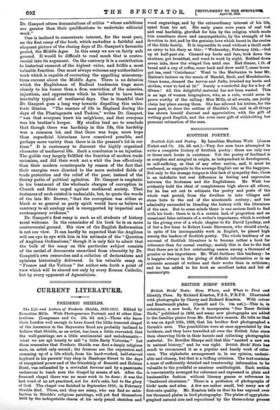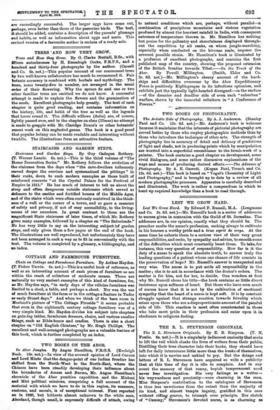BRITISH BIRDS' NESTS.
British Birds' Nests: How, Where, and When to Find and Identify Them. By Richard Kearton, F.Z.S., F.R.P.S. Illustrated with photographs by Cherry and Richard Kearton. With colour and Rembrandt plates. (Cassell and Co. 14e. net.)—This is, in substance, a new book, for it incorporates "Our Rarer British Birds," published in 1899, and many new photographs are added to the familiar plates from Mr. Kearton's camera. He tells us that it was on April 10th, 1892, that his brother first photographed a thrush's nest. The possibilities were at once appreciated by the brothers, and they have travelled all over the British Isles since then observing birds in their haunts and collecting photographic material. Dr. Bowcller Sharpe said that this "marked a new ere in natural history," and he was right. British Birds' Nests has much to recommend it as a popular and handy work of refer- ence. The alphabetic arrangement is, in our opinion, undesir- able and clumsy, but that is a trifling criticism. The text contains a mass of sufficiently detailed and trustworthy information to be valuable to the youthful or amateur ornithologist. Each section is conveniently arranged for reference and expressed in plain and bnsinesslike fashion without literary graces or references to "feathered choristers." There is a profusion of photographs of birds' nests and sites. A few are rather small, but many are of first-rate quality. Mr. Kearton tells us that he has exposed over ten thousand plates in bird photography. The plates of eggs photo- graphed natural size and reproduced by the three-colour process
are exceedingly successfuL The larger eggs have come out, perhaps, even better than those of the passerine birds. The text, it should be added, contains a description of the parents' plumage and habits, as well as information about eggs and nests. This revised version of a favourite author is certain of a ready sale.



























































 Previous page
Previous page